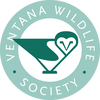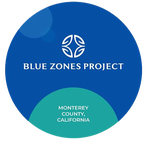Loading bio data
Condor (318)'s nickname "Benito" came from his joy of exploring San Benito County. He explored much of central California, but found the dramatic rock formations and desert climate in this area very pleasant. The cool nights and hot days in this area frequently create powerful thermals which provide lift and allow condors to explore their surroundings with little effort.
Benito (318) was a steady sort of fellow his entire life. He was sexually mature, but in Big Sur, many of the condors were older and more aggressive than he was. He spent almost all his time over at Pinnacles National Park where he was one of the oldest condors. Without the older condors around constantly demonstrating their dominance, Benito (318) could relax and perhaps even occasionally harass the younger condors.
With the lack of older birds around, Benito (318) paired with Condor (317) and chose an excellent nest site within the boundaries of Pinnacles National Park. Unfortunately, their two nesting attempts were unsuccessful. The first nest in 2010, the chick was removed to the zoo because of lead poisoning. During the second attempt in 2011, the nestling was removed due to an injured wing, possibly caused by a tumble from a ledge near the nest cave. This bird was taken in by the talented veterinarians at the Los Angeles Zoo and is now a much loved educational ambassador named Dolly, teaching people about this magnificent species. Benito (318) later successfully raised a foster chick, Condor (550).
Benito (318) was a steady sort of fellow his entire life. He was sexually mature, but in Big Sur, many of the condors were older and more aggressive than he was. He spent almost all his time over at Pinnacles National Park where he was one of the oldest condors. Without the older condors around constantly demonstrating their dominance, Benito (318) could relax and perhaps even occasionally harass the younger condors.
With the lack of older birds around, Benito (318) paired with Condor (317) and chose an excellent nest site within the boundaries of Pinnacles National Park. Unfortunately, their two nesting attempts were unsuccessful. The first nest in 2010, the chick was removed to the zoo because of lead poisoning. During the second attempt in 2011, the nestling was removed due to an injured wing, possibly caused by a tumble from a ledge near the nest cave. This bird was taken in by the talented veterinarians at the Los Angeles Zoo and is now a much loved educational ambassador named Dolly, teaching people about this magnificent species. Benito (318) later successfully raised a foster chick, Condor (550).





